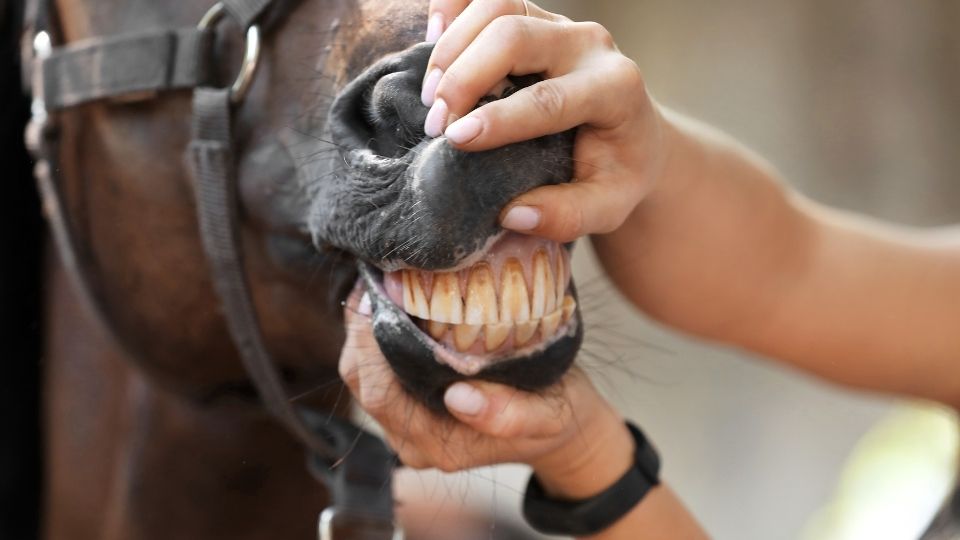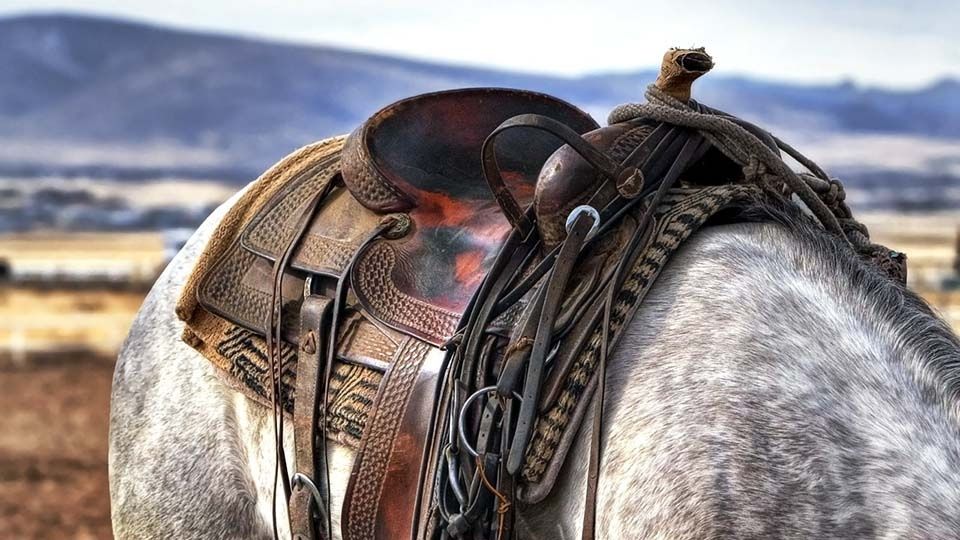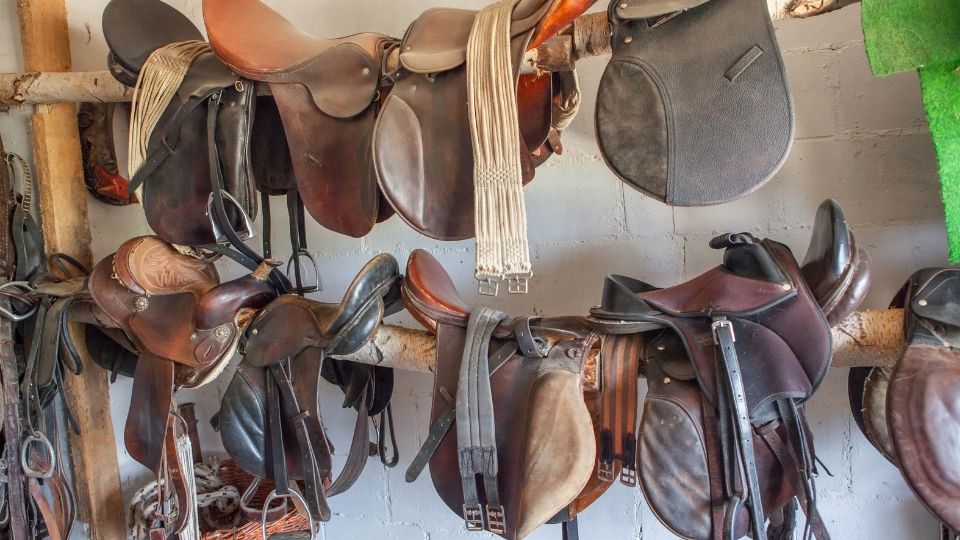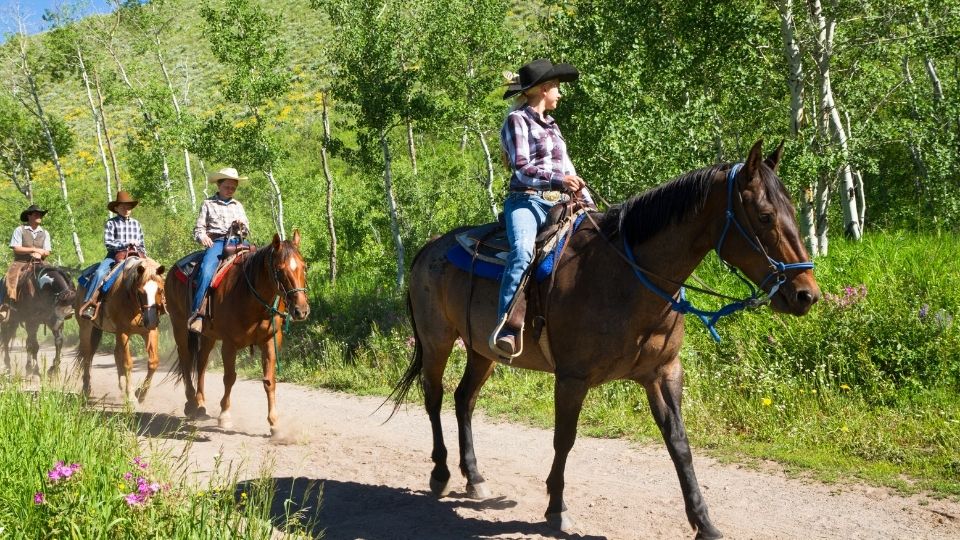Foal Hoof Care: When and How Often to Trim?

There are many steps that need to be taken at foaling time and shortly thereafter to optimize mare and foal health, vigor and longevity.
Mare owners are first concerned about a successful birth and a healthy new foal. The owners provide special attention to insure that the foal nurses, the navel is treated, and that the meconium (first manure) is passed. The mare must also be monitored for passage of the afterbirth, signs of birthing difficulties or injury during foaling, and that she has adequate colostrum and milk production. With a successful foaling and the first few critical days behind you, another important, but often overlooked, procedure for long term soundness and proper hoof and leg structure needs to be addressed–“Proper Early Hoof Trimming.”
Just after foaling many owners spend considerable time in the process of desensitizing, or “imprinting,” the foal to help prepare it for many of its future experiences. This process includes working with the foal’s feet by handling and tapping them. This is to simulate future trimming and shoeing and to develop the foal’s ability to stand with one hoof off the ground. This procedure is extremely important to help teach the young horse to stand on three legs while having its feet manipulated. Unfortunately, in too many cases, that is the only hoof care experience that the foal gets and the feet are then not trimmed until much later in the foal’s life.
The purpose of this fact sheet is to help horse owners who are raising foals have a greater understanding of the importance of early hoof care. Early hoof care also needs to be followed with routine, continuous care to optimize proper hoof and leg structure, performance and long term soundness of their equine friend.
Some foals may be born with major hoof and leg deviations that will require more than early hoof trimming techniques (these foals may require veterinary care or surgery) to minimize these deviations. Amazingly, proper hoof trimming can adjust and improve minor deviations and, more importantly, maintain correct leg structure in foals born with adequately correct legs and hooves. It is equally amazing what neglect or lack of proper trimming will do to foals that have only slight leg deviations and/or even to foals born with straight legs.
Although there are few foals born with “perfect” legs, this fact sheet will help foal owners address improving minor deviations and keeping the perfect foal correct.
The First Trim
Horse owners often wonder when to trim their foal for the first time. Some suggest that no hoof care is needed until the foal is a year old or even worse, until started into riding training. Waiting a year or even two is never acceptable when considering the welfare of the animal. Hooves get long, wear or break unevenly or even worse yet–don’t wear or break at all, thus escalating leg strain and deviation potential.
As the foal matures bones harden and joints formalize making corrections impossible. ALL corrective trimming and efforts to maintain the correct form and function of the leg MUST be implemented well before the foal is 1 year old. Corrective trimming after a horse is 1 year old will usually cause more damage and leg stress over time than it will correct because the bone growth plates are closing (becoming inactive). The greatest successes are a result of early innovation and continued efforts to make corrections slowly with only slight adjustments each trimming. This will allow the limb to self correct as much as possible while causing minimal stress as the bones and joints are modified to a more correct, sound stance and structure.
The foal should have its first trim at 3 to 4 weeks of age if the legs are fairly straight and normal. Earlier intervention should be applied if needed to make major adjustments–remember: “the earlier the better” when it comes to trying to modify a deviated boney column. As most foals are born with some deviation, early intervention helps maximize the success of the corrective trimming efforts.
 When a foal is born, its feet, particularly its front, are fairly pointed (Photo 1). The point on the front feet aids in positioning and delivery through the birth canal plus aids in the tearing of the placenta upon delivery. Once the foal is born the pointed feet become a liability. Due to the hoof shape the foal is unable to break (roll over the toe when stepping) directly over the front of the hoof. This causes the flight path to break to either the outside or inside (most common) of the point causing the foal to become toed in (pigeon toed) or toed out (splay footed). Neglect at this point allows additional wear during break-over, thus contributing to additional deviations if neglected.
When a foal is born, its feet, particularly its front, are fairly pointed (Photo 1). The point on the front feet aids in positioning and delivery through the birth canal plus aids in the tearing of the placenta upon delivery. Once the foal is born the pointed feet become a liability. Due to the hoof shape the foal is unable to break (roll over the toe when stepping) directly over the front of the hoof. This causes the flight path to break to either the outside or inside (most common) of the point causing the foal to become toed in (pigeon toed) or toed out (splay footed). Neglect at this point allows additional wear during break-over, thus contributing to additional deviations if neglected.
Figure 1 shows common leg deviations. The dotted line shows where to trim to correct stance and way of going.

Figure 1

Figure 2
Figure 2 shows the foot path of common deviations from various conformation faults.
A Point to Remember: “All hoof and leg deviations from the ideal, get worse with neglect of hooves and excess growth; and can even become more deviated in their form and function.
The goal of the first trim is to provide a straight break-over point on the hoof. This will discourage any inward or outward deviation in the leg structure and movement pattern thus correcting and/or reducing future deviation increase. Figures 3 and 5 indicate the original shape of the foal’s hoof and the area to be trimmed or squared. Figures 4 and 6 show the trimmed hoof shape from a ground surface view and lateral view, respectively. These drawings illustrate the goal of the first trim and even subsequent trims of the young horse. It should provide a straight and easy break over point for the stride. This will correct minimal deviations and provide a straight path for already correct feet and legs that will help maintain the correct bone structure.

Figures 3-6
The trim can be accomplished by either a toe squaring cut with the hoof nippers. In small hooves it may only require one snip across the toe to accomplish the goal (Photos 2 a, b, & c). The same outcome can be achieved by dragging the rasp over the front of the hoof a few times to remove the point squaring the toe allowing for proper break over. Photos 3 a, b, c, demonstrate different angles and direction to rasp to accomplish the square toe with a rasp.

Photo 2a

Photo 2b

Photo 2c

Photo 3a

Photo 3b

Photo 3c
Trimming for a slightly rolled (Photo 4) or square toe (Photo 5) will greatly enhance correct break-over and thus proper boney column growth in the young horse.
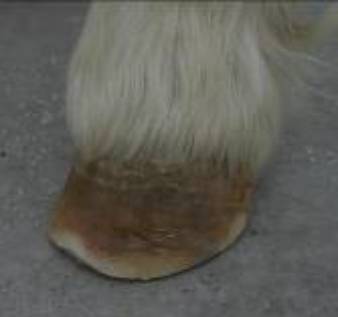
Photo 4

Photo 5
Correcting Minor Deviations
As discussed above, the square toe system works well to maintain correct legs and/or to help correct minor deviations. It is, however, possible to adjust the squared or rolled toe position slightly off center to the outside or inside of the hoof depending on which deviation needs correcting.
As a general rule if the foal toes out you will lower the outside half of the hoof wall (with nippers or rasp) and adjust your square toe slightly off center to the outside (Figure 7). If the foal toes in, you will lower the inside of the hoof wall on the bottom of the hoof and place the squared toe slightly to the inside (Figure 8).
Note: Figures 7 and 8 are somewhat extreme in the drawings to show difference in stance and trimming. Owners and farriers are encouraged to work closely with a veterinarian when trying to make major adjustments.
Figure 7 - Toed Out

Figure 8 - Toed In
The off-center squares will encourage break-over in that direction and counter the existing wear that the current deviation is causing to the hoof. These adjustments should be made slowly with minor changes every 3 to 4 weeks depending on hoof growth.
Utilization of hoof epoxies (glues) may be useful and even necessary to help in correcting major limb deviations where trimming is insufficient to correct the flight pattern and leg stance. These epoxies can be used to build up the low (worn) side of the hoof, encouraging break-over to the opposite side. The use of half shoes, glues/epoxies, or wedged shoes may be necessary to correct deviations but, this needs to be discussed in depth in a future fact sheet.
Summary
Providing an accentuated break over for the toe of a young foal, early in its life, will do more for the good of the horse’s legs than any subsequent trimming or shoeing after a year of age. Squaring the toe of a 3 to 4 week old foal will counter the affect of the sharp toe (front or rear) and provide a straight and easy break-over position, thus helping the legs form a correct boney column structure without deviation to the inside or outside through improper wear. Regular (every 3 to 4 weeks) trimming will maintain the good work started early and allow for solidification of the boney column in as straight and correct a line as possible.
A general “rule of thumb” for care of the mature horse includes trimming the non-use horse every 10 to12 weeks, trimming a barefoot horse in use every 3 to 4 weeks and/or trimming and shoeing the shod horse every 6 to 8 weeks. See Extension fact sheet “Proper Basic Hoof Care” AG/Equine/2006-03, for more details or visit the USU Extension Equine Web site at http://extension.usu.edu/equine/.
Start trimming early and keep it up throughout the life of the horse and you will enhance the longevity of the form and function of your “Equine Friend.” Remember, you will do the most good before the foal is a year old–so, DON’T WAIT!
Published January 2008
Utah State University Extension
Peer-reviewed fact sheet
Authors
Scott McKendrick, American Farriers Association Certified Farrier and USU Extension Coordinator of Equine and Small Acreage Programs; Dr. Kerry A. Rood, MS, DVM, Associate Professor and USU Extension Veterinarian; Dr. Patricia Evans, Assistant Professor, Extension Equine Specialist, USU
Related Research



